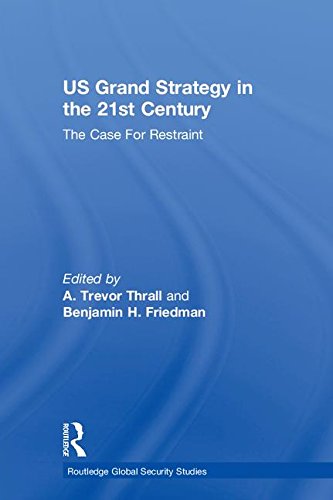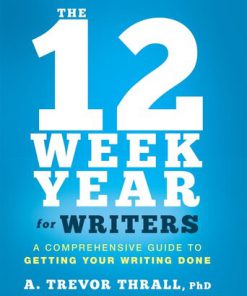US Grand Strategy in the 21st Century The Case For Restraint Routledge Global Security Studies 1st Edition by Trevor Thrall, Benjamin Friedman ISBN 9781138084537 1138084530
$50.00 Original price was: $50.00.$25.00Current price is: $25.00.
US Grand Strategy in the 21st Century The Case For Restraint Routledge Global Security Studies 1st Edition by Trevor Thrall, Benjamin Friedman – Ebook PDF Instant Download/Delivery: 9781138084537 ,1138084530
Full download US Grand Strategy in the 21st Century The Case For Restraint Routledge Global Security Studies 1st Edition after payment
Product details:
ISBN 10: 1138084530
ISBN 13: 9781138084537
Author: Trevor Thrall, Benjamin Friedman
US Grand Strategy in the 21st Century The Case For Restraint Routledge Global Security Studies 1st Edition Table of contents:
1 National interests, grand strategy, and the case for restraint
Alternative grand strategies
Restraint
The prospects for restraint
Road map of the book
Notes
References
Part I The myths of liberal hegemony
2 It’s a trap!: Security commitments and the risks of entrapment
The debate over engagement
The logic of entrapment
When and how does entrapment manifest
Timing entrapment
Goal entrapment
Means entrapment
Entrapment and strategy
Structure and entrapment
Multipolarity
Bipolarity
Unipolarity
The United States, the unipolar era, and the risk of entrapment
China, Asia, and the risks of entrapment
Conclusion
Notes
References
3 Primacy and proliferation: Why security commitments don’t prevent the spread of nuclear weapons
The causes of nuclear proliferation
Nuclear tipping points
Against the grain: new work on security motives and tipping points
A strategic theory of nuclear proliferation
Tipping points as self-defeating prophecy
Implications for primacy as a non-proliferation measure
Conclusions
References
4 Restraint and oil security
Oil market resilience: no need for deep engagement
Supply, demand, and the price of oil
Political risk and cartels
The market response to political-military shocks
The empirical record of political-military oil supply disruptions
Does market response rely on US grand strategy?
Hegemonic stability theory and the oil market
The US military in the Persian Gulf
Conclusion
Notes
References
5 Does spreading democracy by force have a place in US grand strategy?: A skeptical view
The debate about intervention and the spread of democracy
Critical evaluation
A theory of foreign-imposed regime change and democratization
Conditions favorable to democracy
Intervener strategy
Summary and hypotheses
Research design
Coding democratization
Defining and coding foreign-imposed regime change
Control variables
Accounting for selection effects with matching
Analysis and results
FIRC and democratization: a matched analysis
The conditional effect of institutional FIRC on democratization
Foreign-imposed regime change under the Obama administration
Conclusion
Notes
References
6 The tyrannies of distance: Maritime Asia and the barriers to conquest
The shrinking world
Access denied
No-one’s world: negotiating power in an unconquerable Asia
Conclusion
Notes
References
Part II The politics and policy of restraint
7 Not so dangerous nation: US foreign policy from the founding to the Spanish–American War
The Founders’ vision
The four ur-texts of the Washingtonian (or Great Rule) era
The historical record: did the US practice what the Founders preached?
Notes
References
8 The search for monsters to destroy: Theodore Roosevelt, Republican virtu, and the challenges of liberal democracy in an industrial society
The liberal pursuit of “the ineffable splendor of freedom and independence”
Ensuring “the worth of a civilization”: the virtu of the citizen
“The sinews of virtue”
The need for “monsters to destroy”
Staying true to “the traditional policy of the country”
The trumpet’s summons: virtu and the struggle against the common enemies of man
“The age of crusades”
Notes
References
9 Better balancing the Middle East
Growth in America’s Middle East commitments
Mismatch between strategy and interests
The failures of US preponderance in the Middle East
The risks of perpetuating a flawed strategy
A challenging regional environment
Downsizing America’s Middle East commitments
References
10 Embracing threatlessness: US military spending, Newt Gingrich, and the Costa Rica option
Pacifism, isolationism, and comparative risk
Assessing the threats
Major war
Potential major war challenges
The rise of China and the issue of dominance
Russian assertiveness and the economic doomsday machine
Assessing attacks on Taiwan and the Baltic states
Rogue states
Proliferation
Terrorism
Al-Qaeda
Other groups
Responding to terrorism
Policing wars
Protecting allies
International crime
Policing the “global commons”
Cyber
Other issues
Hedging
Concluding reflections
Notes
References
11 Unrestrained: The politics of America’s primacist foreign policy
Primacy’s primacy
Primacy and interest groups
How US military power generates primacy
The allies of primacy
Primacy is a big tent
Sources of restraint
Conclusion: prospects for balance
Notes
References
12 Identifying the restraint constituency
Introduction
Hawk, dove … restrainer?
What is restraint?
Restraint and the literature on foreign policy attitudes
Identifying the restraint constituency
Profiling the restraint constituency
Restraint constituency estimate one: CNN/ORC 2014
Restraint constituency estimate two: Chicago Council on Global Affairs 2014
Who are the Restrainers?
Partisanship and restraint
The correlates/underpinnings of restraint
How restrained is the American public?
The reasonably restrained public
Challenges to restraint
Conclusion: today’s restraint coalition, tomorrow’s restraint constituency
Notes
References
Index
People also search for US Grand Strategy in the 21st Century The Case For Restraint Routledge Global Security Studies 1st Edition:
does the us have a grand strategy
u.s. grand strategy
us grand strategy is outlined in which strategic document
grand strategy of the united states
what is the grand strategy of the united states
Tags:
Trevor Thrall,Benjamin Friedman,US Grand Strategy,21st Century,Restraint
You may also like…
Fiction - Myths & Folklore
Politics & Philosophy - Social Sciences
Reference - Writing
Religion & Spirituality - Judaism
Politics & Philosophy - Anthropology
Routledge Companion to Global Cyber Security Strategy 1st Edition Scott N. Romaniuk (Editor)
History - Military History
Purpose and Power: US Grand Strategy from the Revolutionary Era to the Present Stoker
Technique - Aerospace Equipment
Drones and US Grand Strategy in the Contemporary World 1st Edition Francis N. Okpaleke












